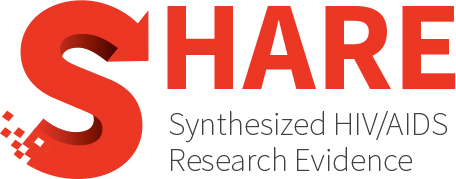Preventing HIV/AIDS risk behavior among youth
Abstract
The purpose of this article is to evaluate the quality of published studies conducted in North America that assessed behavior change interventions to prevent HIV/AIDS among people ages 12-24 years. A search of the Medline, HealthStar, and AIDSLINE electronic databases was completed. English language articles published between 1995 and 2000 were screened for relevance. A scoring system was developed to assess eligible studies on the following criteria: (a) selection bias, (b) study design, (c) sample size, (d) description of intervention, (e) theoretical basis for intervention, (f) data collection, (g) long-term follow-up, and (h) attrition and withdrawals. Two reviewers evaluated studies. Of the 20 eligible studies, all (n = 20) used convenience samples. The most common research design used was the experimental (n = 16). Ten studies were rated as “Strong,” 6 were of “Moderate” quality, and 4 were rated as “Weak.” The quality of intervention evaluations related to HIV/AIDS prevention among young people appears to be improving, although recruitment of probability samples, use of standardized outcomes, and attrition rates remain as challenges.
Authors
Shoveller JA, Wia Pietersma WA.
Year
2002
Topics
- Population(s)
- Children or Youth (less than 18 years old)
- Prevention
- Sexual risk behaviour
- Education/media campaigns
